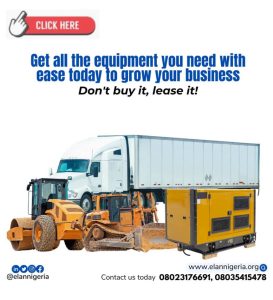
- Usage Terms and Conditions: Another simple technique of asset management is to simply specify the usage terms and conditions of equipment in the main lease agreement. For instance, it may be stipulated that the equipment should be operated for a specified number of hours per day and that only certain category of persons should be allowed to operate the equipment. It should be noted that many lessees, especially in the oil industry prefer operating leases since they expect to overburden the equipment. This generally results in little, if any, residual value at the end of the lease term. They would rather lease not own, a rapidly depreciating asset. Where the leasing company is aware that the lessee will extensively use the equipment, it is advisable to factor the price of the excess wear and tear on the equipment into the lease structure accordingly and to be very conservative in valuing the residual of such equipment.
As a protection technique, the lease agreement could contain a clause requiring the lessee to use the asset in a careful and proper manner. This provides further protection to the lessor, in case the lessee misuses the asset and thereby injures a third party or damages the equipment. For example, lease agreement could contain a provision like this. “Lessee shall use the equipment in a careful and proper manner in conformity with manufacturer’s specifications and shall comply with all federal, state, local governments Laws and other laws, ordinances and regulations in any way relating to the possession of the equipment.”
- Asset Register: maintenance of an up to date register of leased assets is very vital to the management of the lease portfolio. The asset register is better maintained by a computer program and should contain information such as name of the leased asset, serial number, tag number, location of the asset, name of lessee, servicing date, commencement date, terms of lease, cost of equipment, residual value. The purpose is to enable the lessor to keep track of all the leased assets and aid its inspectors in their routine inspection of the leased asset.
- Routine Inspection: Routine inspection of leased assets by the lessor is very vital aspect of asset management. This ensures that assets are not removed from their location without the prior knowledge of the lessor, and it also ensures that the lessee do not part with possession of the leased asset. The basic technique here is to establish an inspectorate division, whose responsibility will be among others, the inspection of the leased assets at their various locations at a regular interval. With such inspection, the lessor will be able to confirm the existence of the leased equipment and their physical and working conditions in relation to the estimated residual value.
Where inspection report states that the rate of depreciation of equipment is more than expected, the usage terms and conditions could be reviewed and the mode of usage of the asset by the lessee investigated to determine whether the asset is being over used or is not being properly operated.
It is also essential for the lessor to monitor the performance of the equipment supplier to ensure that the equipment is functioning well.
- Asset Categorisation and Specialisation: Experience has shown that not all classes of assets/equipment are particularly suitable for operating leasing. The main reason for this, is the impact of modern technology on useful life of some classes of assets such as computers, office equipment, medical equipment and communications gadgets. Obsolescence must be taken into consideration while selecting such assets for leasing purposes. This also puts the lessor in a very critical situation in setting the residual value of such assets. Therefore, as a matter of policy, a lessor in his ultimate attempt to manage his leased assets, needs to categorise the types of assets that will be booked as operating leases. Most leasing companies in Nigeria, have not actually dealt with such sophisticated equipment and as such the need for the careful categorisation of that type of assets that would come under operating lease, has not arisen yet. For practical purposes, the following assets have been found to be very suitable for operating lease, vehicles, generating plants, aircraft, agricultural tractors, machine tools etc. In an attempt to manage its leased asset, it is advisable for the lessor to cautiously select the category of assets that would be under operating lease. This would go a long way in enabling the lessor to understand all the intricacies involved in leasing such equipment. This knowledge would be used as corollary in determining the residual value to be used in the lease pricing.
Insurance: Another major technique of asset management is that of obtaining a comprehensive insurance coverage on the leased equipment. The basic objective of this is to protect the lessor against the risks of theft, damage or destruction of the leased asset. Thus, it is a justifiable asset management technique to obtain comprehensive insurance coverage as a protection against most of these risks.
To fully gain foothold on how best to manage your assets, plan to attend ELAN’s Lease Administration Course (From Origination to Termination), 08023176691, 08023179048, info@elannigeria.org, elan_nigeria@yahoo.com

